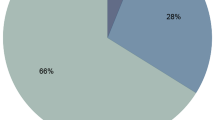Abstract
Chemosensory dysfunction has been reported in patients with diabetes mellitus (DM). However, the clinical significance in relation to the disease stage remains unclear. The aim of this investigation was to assess olfactory and gustatory function with valid clinical tests in patients with DM types 1 and 2 with and without accompanying diseases. Seventy-six patients with DM were divided into three groups according to disease stage. Taste function was tested by means of impregnated paper strips and smell function was screened using a five-item smell identification test. The results of the patients with uncomplicated DM were compared with the results from 29 healthy subjects. The results showed no significant differences in smell and taste function between patients with uncomplicated DM and healthy subjects. However, patients with additional diseases exhibited decreased smell acuity. Moreover, patients with DM type 2 showed impaired smell function compared with patients with DM type 1.
Similar content being viewed by others
References
Frasnelli J, Hummel T (2005) Olfactory dysfunction and daily life. Eur Arch Otolaryngol 262:231–235
Lauer HM, Filer LJ, Reiter FA et al (1976) Blood pressure, salt preference, salt thresholds and relative weight. Am J Dis Child 130:493–496
Drewnowski A, Halmi KA, Pierce B et al (1987) Taste and eating disorders. Am J Clin Nutr 46:442–450
Mattes RD (1985) Gustation as a determinant of ingestion: methodological issues. Am J Clin Nutr 44:672–683
Jorgensen MB, Buch NH (1960) Studies on the sense of smell and taste in diabetics. Acta Otolaryngol 53:545–549
Patterson DS, Turner P, Smart JV (1966) Smell threshold in diabetes mellitus. Nature 209:625
Schelling JL, Téreault L, Lasagna L et al (1965) Abnormal taste threshold in diabetes. Lancet 1:508–512
Weinstock RS, Wright HN, Smith DU (1993) Olfactory dysfunction in diabetes mellitus. Physiol Behav 53:17–21
Le Floch JP, Le Lièvre G, Sadoun J et al (1982) Taste impairment and related factors in type i diabetes mellitus. Diabetes Care 12:173–178
Le Floch JP, Le Lièvre G, Labroue M et al (1992) Early detection of diabetic patients at risk of developing degenerative complications using electric gustometry: a five-year follow-up study. Eur J Med 1:208–214
Le Floch JP, Le Lievre G, Labroue M et al (1993) Smell dysfunction and related factors in diabetic patients. Diabetes Care 16:934–937
Perros P, Wallace Mac Farlane T et al (1996) Altered taste sensation in newly-diagnosed NIDDM. Diabetes Care 19:768–770
Schiffman SS (1983) Taste and smell in disease (first of two parts). NEJM 308:1275–1279
Mueller C, Renner B (2006) A new procedure for the short screening of olfactory function using five items from the “Sniffin’Sticks” identification test kit. Am J Rhinol 20:113–116
Mueller C, Kallert S, Renner B et al (2003) Quantitative assessment of gustatory function in a clinical context using impregnated “taste strips”. Rhinology 41:2–6
Stolbová K, Hahn A, Beneš B et al (1999) Gustometry of diabetes mellitus patients and obese patients. Int Tinnitus J 5:135–140
Landis BN, Hummel T, Hugentobler M et al (2003) Ratings of overall olfactory function. Chem Senses 28:691–694
Soter A, Kim J, Jackman A, Tourbier I, Kaul A, Doty RL (2008) Accuracy of self-report in detecting taste dysfunction. Laryngoscope 118:611–617
Santos DV, Reiter ER, DiNardo LJ et al (2004) Hazardous events associated with impaired olfactory function. Arch Otolaryngol Head Neck Surg 130:317–319
Conflict of interest statement
The authors declare that they have no conflict of interest.
Author information
Authors and Affiliations
Corresponding author
Rights and permissions
About this article
Cite this article
Naka, A., Riedl, M., Luger, A. et al. Clinical significance of smell and taste disorders in patients with diabetes mellitus. Eur Arch Otorhinolaryngol 267, 547–550 (2010). https://doi.org/10.1007/s00405-009-1123-4
Received:
Accepted:
Published:
Issue Date:
DOI: https://doi.org/10.1007/s00405-009-1123-4




